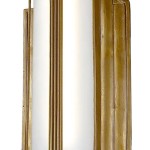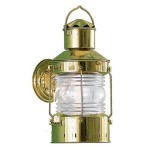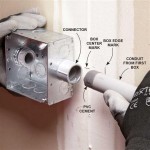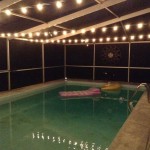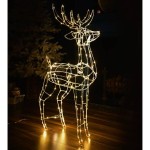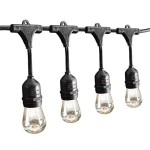Elevating Outdoor Ambiance: A Guide to Outdoor Hanging Light Ideas
Outdoor hanging lights serve as both functional illumination and aesthetic enhancements for exterior spaces. Selecting the appropriate outdoor hanging lights requires careful consideration of factors such as style, functionality, and environmental suitability. Implementing the right lighting strategy can transform a patio, porch, garden, or entryway into a welcoming and visually appealing area. This article provides an in-depth exploration of various outdoor hanging light options, offering insights into their design characteristics, practical applications, and installation considerations.
Understanding the Different Styles of Outdoor Hanging Lights
The market offers a diverse range of outdoor hanging light styles, each distinguished by its unique design and intended application. Common styles include lanterns, pendants, string lights, and chandeliers, among others. The choice of style depends largely on the desired aesthetic, the architectural style of the property, and the specific area being illuminated.
Lanterns:
Outdoor lanterns evoke a sense of classic elegance, often featuring intricate metalwork and glass panels. They are available in a variety of sizes and shapes, from traditional carriage lanterns to more modern, geometric designs. Lanterns provide a warm, diffused light, making them ideal for entryways, porches, and patios. The choice of bulb, such as a warm-toned LED, further enhances the welcoming ambiance.Pendants:
Outdoor pendant lights typically feature a single light fixture suspended from a chain or rod. They offer a more streamlined and contemporary look compared to lanterns. Pendant lights are well-suited for covered areas like porches and pergolas, providing focused illumination for tasks such as outdoor dining or reading. Materials used in pendant lights range from durable metals like aluminum and stainless steel to weather-resistant plastics.String Lights:
String lights, also known as bistro lights or fairy lights, offer a more informal and festive lighting option. They consist of a series of small bulbs strung along a flexible wire or cord. String lights are commonly used to create a warm and inviting atmosphere in gardens, patios, and outdoor entertaining areas. They are relatively easy to install and can be draped across trees, fences, or pergolas.Chandeliers:
Outdoor chandeliers bring a touch of sophistication and grandeur to outdoor spaces. Designed for covered areas, these fixtures feature multiple light sources arranged in an elaborate design. Outdoor chandeliers are typically crafted from weather-resistant materials and are suitable for covered patios, verandas, and outdoor dining areas. They serve as a focal point, adding a touch of luxury to the outdoor setting.Beyond these core styles, specialized options like pathway lights, floodlights, and spotlights cater to specific needs, such as illuminating walkways, highlighting architectural features, or providing security lighting. Each style contributes to a unique outdoor ambiance, and the careful selection and placement of these lights are crucial for achieving the desired effect.
Key Considerations for Choosing Outdoor Hanging Lights
Selecting the right outdoor hanging lights involves careful assessment of several factors to ensure optimal performance, durability, and aesthetic appeal. This includes considering the location, the level of illumination required, the material durability, and energy efficiency.
Location and Purpose:
The intended location significantly influences the type of lighting fixture suitable for the space. Lights installed in exposed areas, such as gardens or unprotected patios, require a higher degree of weather resistance compared to those placed under covered porches. The purpose of the lighting also affects the selection. Entryways benefit from brighter, more welcoming lights, while dining areas often benefit from softer, more ambient lighting.Brightness and Illumination Levels:
The desired level of illumination should be carefully considered. Task lighting, such as that used for outdoor cooking or reading, requires brighter lights with focused beams. Ambient lighting, intended to create a relaxing atmosphere, can be softer and more diffused. The lumen output of the chosen bulbs should be adequate for the intended purpose, ensuring sufficient visibility without creating excessive glare.Material Durability and Weather Resistance:
Outdoor lighting fixtures are subjected to various environmental conditions, including rain, snow, sunlight, and temperature fluctuations. Therefore, it is essential to choose fixtures made from durable, weather-resistant materials. Common materials include aluminum, stainless steel, and powder-coated metals, which resist corrosion and fading. Look for fixtures with a high Ingress Protection (IP) rating, indicating their resistance to dust and water ingress. An IP rating of IP44 or higher is generally recommended for outdoor use.Energy Efficiency and Bulb Selection:
Opting for energy-efficient lighting solutions not only reduces energy consumption but also lowers long-term operating costs. LED (Light Emitting Diode) bulbs are an excellent choice for outdoor lighting due to their high energy efficiency, long lifespan, and minimal heat output. LEDs are available in a range of color temperatures, allowing you to choose the desired ambiance. Consider using solar-powered lighting options for additional energy savings and reduced environmental impact.Style and Design Compatibility:
The style of the outdoor lighting should complement the architectural style of the property and the existing outdoor decor. Choose fixtures that enhance the overall aesthetic, creating a cohesive and visually appealing outdoor space. Consider factors such as color, finish, and design details when selecting lighting fixtures.Installation and Maintenance of Outdoor Hanging Lights
Proper installation and regular maintenance are crucial for ensuring the longevity and optimal performance of outdoor hanging lights. Following safety guidelines and implementing a routine maintenance schedule will help keep your lights functioning correctly and looking their best.
Safety Precautions and Electrical Considerations:
Installing outdoor lighting involves working with electricity, so safety precautions are paramount. Always disconnect the power supply before working on any electrical fixtures. If you are not comfortable working with electricity, it is recommended to hire a qualified electrician. Ensure that all wiring and connections are properly insulated and protected from the elements. Use weatherproof connectors and junction boxes to prevent water from entering the electrical system.Installation Procedures and Mounting Options:
The installation procedure varies depending on the type of lighting fixture and the mounting surface. For hanging lights, ensure that the support structure is capable of bearing the weight of the fixture. Use appropriate hardware, such as hooks, chains, or rods, to securely suspend the light. Follow the manufacturer's instructions carefully during installation. Consider using adjustable mounting options to allow for flexibility in positioning the lights.Routine Maintenance and Cleaning:
Regular maintenance is essential for keeping outdoor lights functioning properly and looking their best. Clean the fixtures regularly to remove dirt, dust, and debris. Use a soft cloth and mild detergent to clean the surfaces. Inspect the wiring and connections periodically for any signs of damage or corrosion. Replace any damaged components promptly. Prune any vegetation that may be obstructing the lights or interfering with their performance.Extending Lifespan and Preventing Damage:
To extend the lifespan of outdoor hanging lights, protect them from harsh weather conditions whenever possible. During extreme weather events, such as hurricanes or severe storms, consider removing the fixtures and storing them in a safe place. Use covers or protective coatings to shield the fixtures from sunlight and moisture. Follow the manufacturer's recommendations for maintenance and care to ensure optimal performance and longevity.By adhering to these guidelines for installation and maintenance, homeowners can ensure that their outdoor hanging lights provide reliable illumination and enhance the beauty of their outdoor spaces for years to come.
Ultimately, the selection and implementation of outdoor hanging lights should be aligned with the functional needs of the space, the desired aesthetic, and the architectural characteristics of the property. Thoughtful planning and meticulous execution will result in a well-lit and inviting outdoor environment that enhances both the beauty and usability of the space.

28 Backyard Lighting Ideas How To Hang Outdoor String Lights

13 Backyard String Light Ideas That Are Stunning Bob Vila

30 Best String Lights Outdoor Ideas For A Beautiful Backyard

Outdoor String Light Ideas

20 Amazing Outdoor Lighting Ideas For A Shabby Chic Garden

Diy Projects Ideas Outdoor Lighting Chandelier Globe Lights

Summer Outdoor Lighting Ideas Contemporary Design Diy

Dreamy Pergola Lighting Ideas

30 Best String Lights Outdoor Ideas For A Beautiful Backyard

Pergola Lighting Ideas
Related Posts
